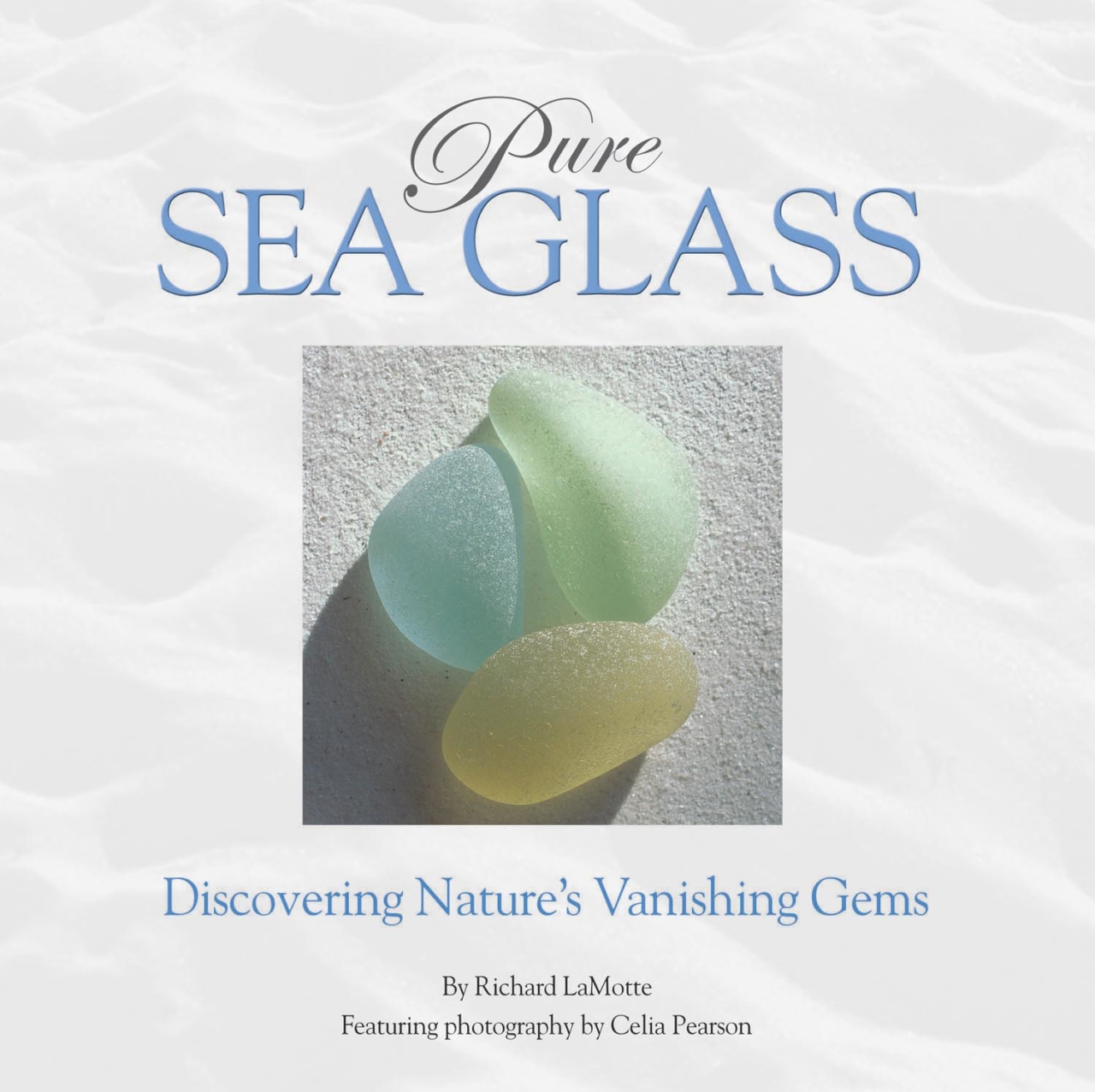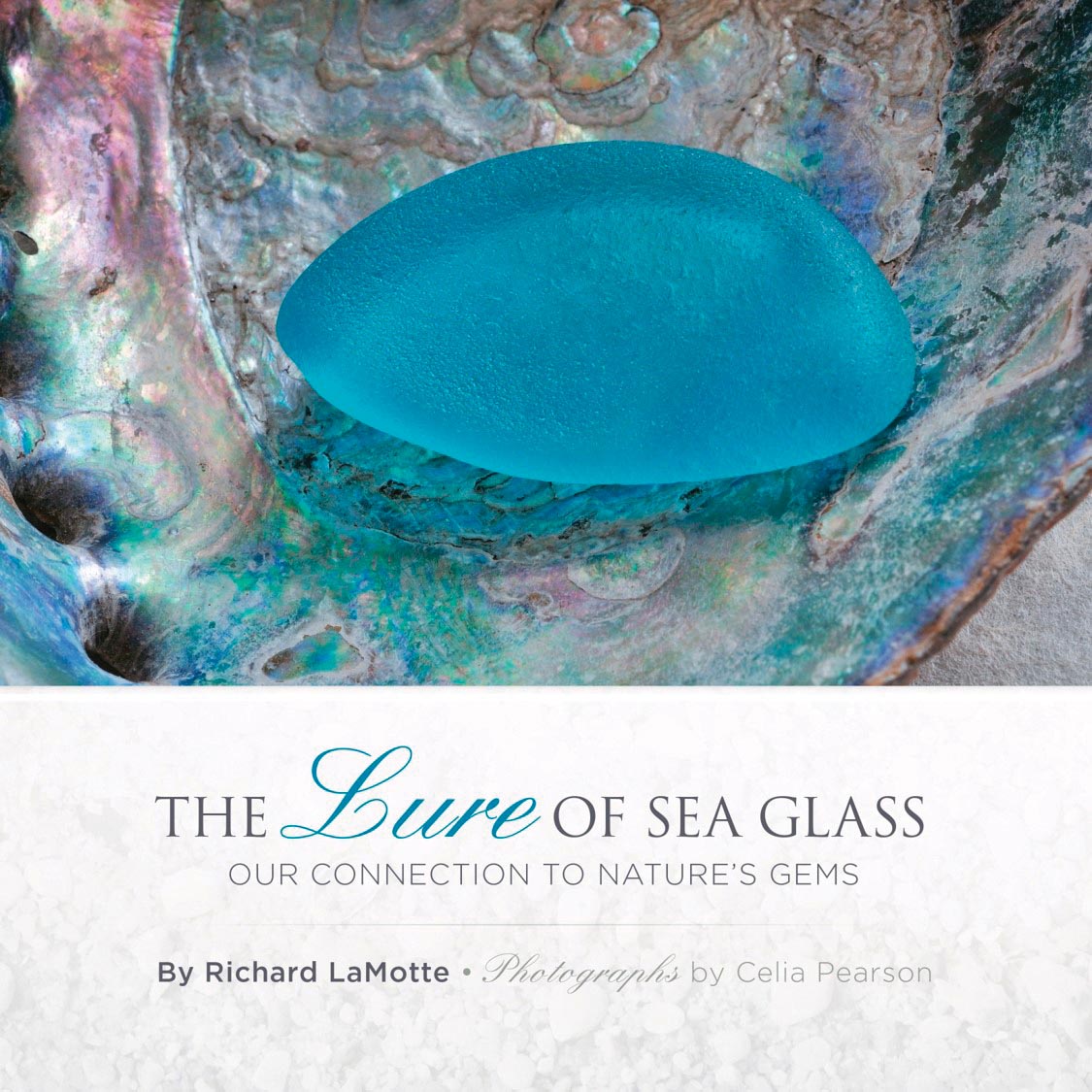EASTERN SHORE WRITER RICHARD LAMOTTE IS INTERNATIONALLY KNOWN FOR HIS SEA-GLASS KNOWLEDGE
Written by Joe Willey
Richard LaMotte is an expert on the subtly beautiful but abandoned pieces of history called sea glass. He has collected more than 40,000 pieces along the shores of the Chesapeake Bay with his family — and he will gently educate you on a fragment’s esoteric past, the unforgiving physics that help create it and the emotional attachment that can come from discovering the perfect piece. LaMotte’s passion for finding, dating and collecting sea glass has inspired countless others to begin searching.
When his first book, Pure Sea Glass, was published, it received immediate attention. “I knew people were excited, but I didn’t know how excited,” he remembers. LaMotte had extensive knowledge of the subject, but he did not want to write a dry primer. “I tried to bring art along with science.” The book, now in its 18th printing, is as artful as it is scientific.
Speaking to LaMotte about sea glass is both eye-opening and educational. During a conversation, details flow from him in an easy rhythm. He explains that glass can be roughly dated by color, with soft pastels dating before the 1930s and brighter colors coming later. While white, kelly green and brown glass are the most common, orange and red are the rarest. Cobalt blue glass is prevalent in the Chesapeake Bay region since Maryland Glass was the producer of the iconic blue Bromo-Seltzer bottle. Who knew there was enough information in a shard of glass to link it to a shard of history?


REQUIRED READING Chestertown’s Richard LaMotte has been at the forefront of sea-glass research since presenting his first lecture on the topic back in 2002. His book, Pure Sea Glass, Discovering Nature’s Vanishing Gems, is a master reference on sea glass for North American collectors, earning first place in nonfiction from the Writer’s Digest 13th Annual International Self-Published Book Awards.
LaMotte also has an encyclopedic knowledge of just why sea glass develops the soft, lustrous finish that makes it attractive to the eye and the hand. The action of waves tossing a piece of glass repetitively against the sand is an important step, but it is not the only one that makes a common glass evolve into a desirable piece of sea glass. Hydration and dehydration also need to work their weathering magic at a molecular level. Surprisingly, common sea glass is not
so common.
There is another unexpected facet to his prominence as a sea-glass expert and one that continues to inspire him. LaMotte said, “I tried to fit everything I thought people wanted to know in my first book.” But he was consistently surprised by the emotional stories fans of the book shared with him. At book signings, people would introduce themselves and say, “I found this piece when I was at my lowest” or “I remember looking for sea glass with my mom.” One minister used Pure Sea Glass to help parents grieving over the loss of a child to see that something beautiful can come out of brokenness.
The depth of a conversation with LaMotte reflects the surprising richness of each piece of sea glass that washes onto a pebbly beach after a storm. There is history, science, exploration and emotion in each tiny fragment, no matter the color. There is a shared enthusiasm for sea glass that rests in the discovery and meaning it brings to an individual’s life. Collectors know that each abandoned piece has weathered countless storms and finally made its way back to shore and made it back beautifully.
